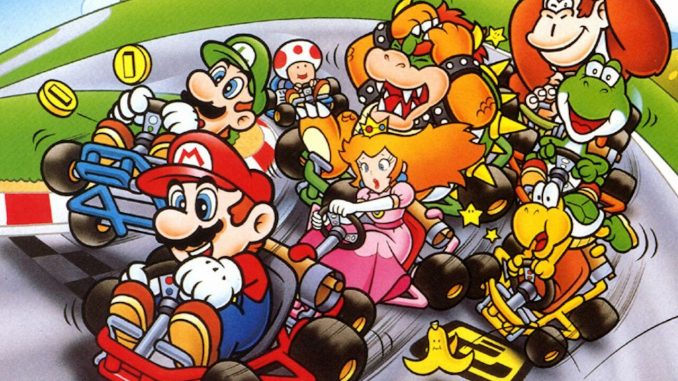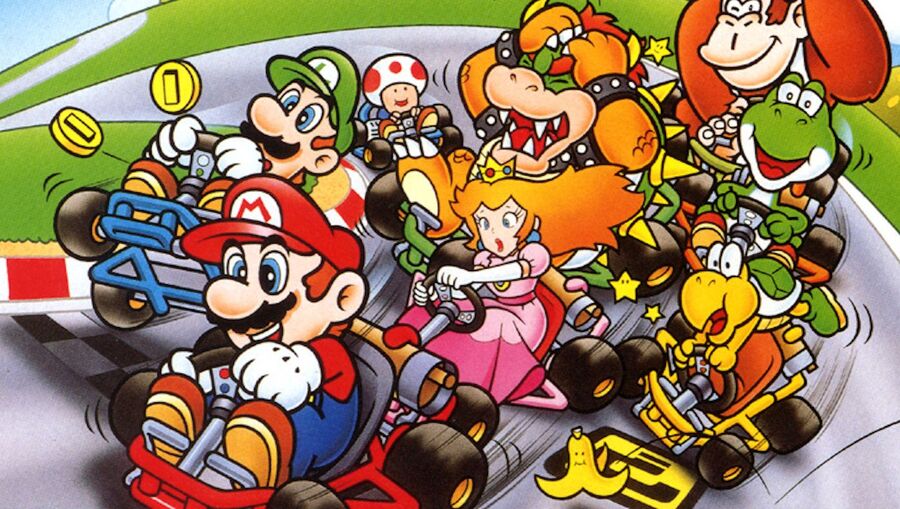Advertisement


The landscape of the Mario Kart series looks very different today than it did in 1992 when Super Mario Kart was released for the Super NES. Of course, there’s a definite improvement in terms of graphics, and thanks to the releases of the Mario Kart 8 Deluxe Booster Course Pass and Mario Kart Tour for mobile, new characters, karts, and courses are now dropping all the time. Yes, there’s now an official Mario Kart game on non-Nintendo hardware – what a world we live in! At its core, however, Nintendo’s top racing franchise is essentially the same game today as it was 30 years ago.
Of course, with all titles in the Mario Kart series, each entry had to work within the technical limitations of the respective console. As with any video game, coming up with new ideas is a balancing act between what new hardware can bring to the table – be it two- or four-person multiplayer, full 3D character models, online multiplayer, AR racing, the list goes on further – towards the realities and limitations of this hardware. This was no more the case than with the franchise-opening SNES title, which managed to positively impact a hardware constraint by introducing a mechanic that would later define the franchise’s racing style: the humble drift.
The first entry in the Mario Kart series was originally going to be a multiplayer F-Zero sequel. “We didn’t have the concept of a racing game with Mario at all, we started experimenting for a multiplayer F-Zero game,” explained Super Mario Kart co-director Hideki Konno in a SNES anniversary interview that coincided with the launch of the Super NES Classic Mini. Led by Konno and co-director Tadashi Sugiyama, while Shigeru Miyamoto served as producer and assigned directors their duties, this two-player racing project should capitalize on the success of the futuristic launch title and make the most of a rapidly booming culture of couch- Co-op gameplays.
Miyamoto was right, with its two controllers the SNES was certainly the rightful home of an F-Zero multiplayer racing game; However, running the game’s signature sprawling rectilinear tracks in the requisite split-screen mode was too much for the 16-bit hardware. The tracks had to be smaller and – to give a better sense of the distance covered – have more hairpin bends. The team emphasized the need for track turns in the following exchanges between Konno and Sugiyama:
conno: In F-ZERO you hurtle down incredibly long straight lines at over 400mph, but we found splitting the screen into upper and lower parts to allow two players to do the same thing was out of the question.
Sugiyama: Due to hardware limitations it was not possible to display routes with long straight lines in two windows on the screen.
conno: If you look back at the Super Mario Kart tracks, you’ll understand. Instead of tracks with long straight lines, the track designs are compact, with lots of twists and turns, allowing them to fit nicely in a square.”
With the exception of some outliers (*Cough* ‘Excitebike Arena’ *Cough* ‘Baby Park’), long straights aren’t typically a feature of most Mario Kart tracks; Courses are defined by how you handle the sharp turns without landing on the grass or flying into space.
However, the SNES hardware limitations weren’t an obstacle for the Super Mario Kart team – at least not after the designers put on their thinking caps. Turning those tricky, necessarily sharp turns into a joyful part of the gaming experience was something that needed to be addressed, and so the drift mechanic was born.
Before the addition of Drift Boost, this “glide” feature in Super Mario Kart was simply there to maintain momentum and ensure that the track’s curves weren’t detrimental to your enjoyment. Without the introduction of this curve assistant, it would have been almost impossible to drive the small and winding tracks at the top speeds of the karts.
So the introduction of drifting was a necessity, but this method of fighting hardware limitations has, as any regular Mario Kart player will attest, become a key element to a successful race. The mechanics were updated for Mario Kart 64 to add the Boost feature – which actively rewards you for extending your drift – and this has been implemented in every subsequent entry since.
While the later additions to the franchise didn’t have any technical issues with making the courses longer and straighter – and we got a great multiplayer F-Zero back in 1998 – this initial limitation defined the series’ playstyle and how Mario and Co. drive through tight corners. Super Mario Kart is referenced almost obsessively in its sequels, from remastered tracks to the return of the Super NES’s balloon-bursting battle mode, but the modest drift can perhaps be seen as the biggest callback of all. Drifting and then drift-boosting is an essential element of what makes a Mario Kart game feeling like a family member.
And here we are 30 years later, with fans and commentators eyeing the aging Switch, wondering what innovations a potential (and inevitable) Mario Kart 9 might bring while Nintendo serves up nostalgia in the form of DLC circuits. Perhaps a generational leap is needed before Mario Kart can evolve. The introduction of drifting in Super Mario Kart is proof that the best designers are at work With System limitations, though. Ironically, the hardware issues that initially prevented the development of a massive multiplayer racing game have spawned one of Nintendo’s most enduringly popular franchises.
Ultimately, the team faced a problem and thankfully let it slide.
What are your fondest memories of Super Mario Kart? Slide on to the comments and let us know!

